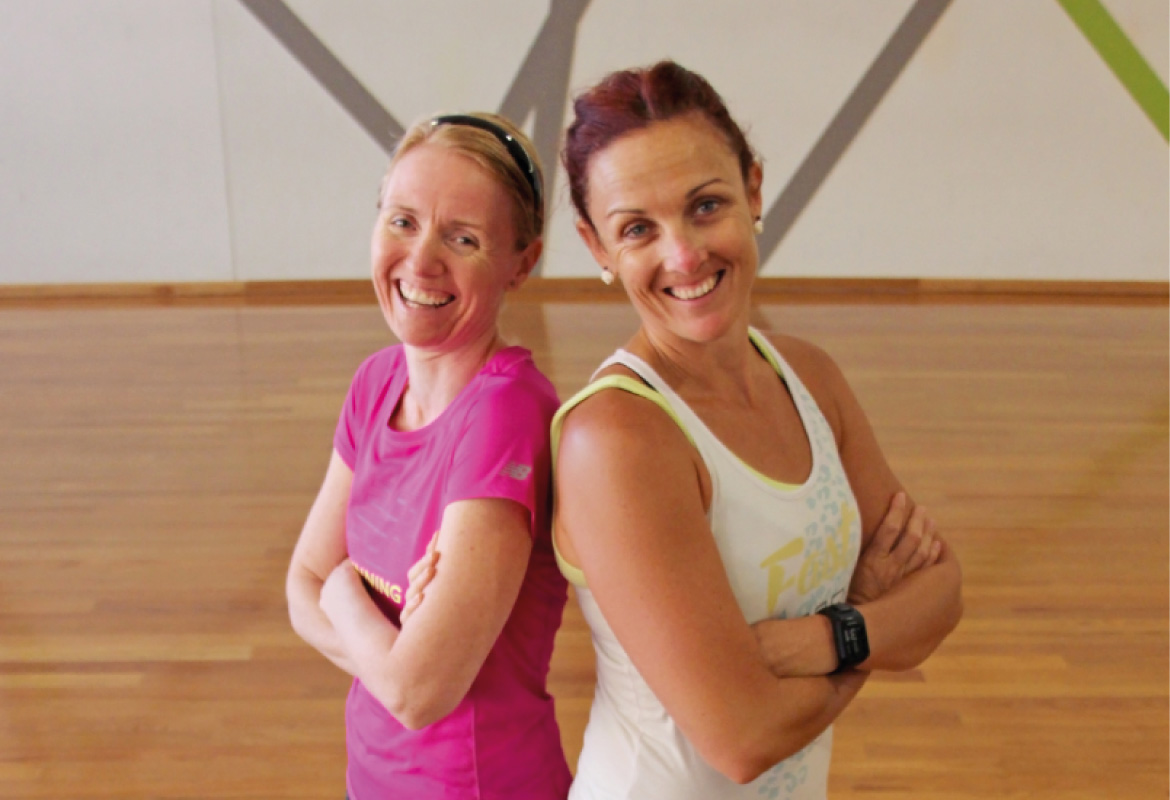Get ready for the Redcliffe Jetty to Jetty with Lisa from Dolphins Health Precinct.
It’s running season again and my favourite time of the year. Being a Personal Trainer I come across plenty of people who are keen to either start running or just want to improve their time distance. Everyone that I have run with over the years has asked me questions about running at some point, so I thought I would help by posting some of these for you to read. So if you are someone ready to tie up the laces but not quite ready to take off yet, here are some topics that may just help you take your first running steps.
Q: Can I walk during my run?
A: Of course you can walk during your runs. Some people who are just getting started with running assume that walking is like giving up or cheating. Taking walk breaks is actually a smart strategy for building your endurance and improving your running. Even regular runners still use a run/walk strategy, especially for long distance runs so adopt this idea and go for it.
Q: How should I breathe while I am running?
A: This is a really common question. Many people have misconceptions about how to breathe when they are running. You should breathe through both your mouth and nose when you are running because your muscles need oxygen to keep moving and your nose simply can’t deliver enough.
Make sure you’re breathing more from your diaphragm or stomach and not from your chest as chest breathing is far too shallow. Deep stomach breathing allows you to take in more air which can also help prevent side stitches. The feeling of extending your stomach actually triggers lung expansion and therefore increases your oxygen intake.
You should exhale through your mouth and try to focus on exhaling fully for this will remove more carbon dioxide and assist you achieve a deeper inhale.
Q: How do you get rid of a side stitch?
A: A side stitch or a sharp pain on the lower edge of the ribcage can be a huge annoyance for runners. You may be able to remove the discomfort by gently pushing your fingers into the area where you’re feeling the stitch. To completely get rid of the side stitch, try altering your breathing pattern. Take a deep breath in as quickly as you can to force your diaphragm down. Hold your breath for a couple of seconds and then forcibly exhale through pursed lips.
If you get a cramp during your run you may want to try changing your breathing/striding pattern. If you always exhale when your right foot strikes the ground, try exhaling with the left foot strike.
If all else fails, you may have to stop and walk briskly for a few seconds while concentrating on deep breathing. Continue running after the stitch goes away.
Q: How fast should I run?
A: Many runners, especially beginners, are curious about what pace they should be running. Most daily runs should be done at an easy pace, however what pace qualifies as easy? The actual pace is different for everyone. The best and simplest way to determine this is to run slow enough so that you can carry on a conversation. If you’re running with someone you should be able to speak in complete sentences and not just give yes or no answers. If you’re running alone, you should be able to sing Happy Birthday without gasping for air. For some new runners, a conversational pace may mean doing a run/walk combination.
So, don’t worry about your pace per kilometer. If you can pass the talk test then you are running at the right speed.
Q: Should I eat before I run?
A: It’s not a good idea to run immediately after eating because it may lead to cramping or side stitches. However running on an empty stomach may cause you to run out of energy. Your best bet is to eat a snack or light meal about 1.5 to 2 hours before you start running. Pick something high in carbohydrates like a banana and other items that are low in fat, fiber, and protein. Remember to hydrate prior to a run.
Q: Should I focus on improving my distance or my speed?
A: As a new runner it is better for you to start with trying to increase the distance of your runs. As you build up your endurance your speed will also improve.
Do not rush into formal speed training, such as interval workouts, just yet. Doing too much running at too high an intensity is an easy way to get injured. After you have been running for about two months and have a nice base, you can start by adding strides into one of your weekly runs. You can also try picking up the pace towards the end of one of your runs. Wait until you have been running for 3 to 4 months before you start to add tempo runs or interval workouts.
Q: When does running get easier?
A: This is a very common question amongst new runners and there isn’t one answer that fits everyone. Beginner runners sometimes struggle for different reasons. Many new runners might find that the turning point is when they can run continuously for 30 minutes. At that point, they start to feel more comfortable and confident. So it takes a little bit of patience to build up your fitness and get to a point where running feels easier. Just keep working on increasing your distance little by little and it will get easier.
Running really is about setting yourself a goal. Start small and slow to allow your body to get used to it. Make sure that your shoes are right for you and start by placing one foot in front of the other. Don’t forget that this year Nicky and I will be hosting a 10 week running program which kicks off on Saturday 7th May. Whether you are a seasoned runner or this is your first attempt, come and join us and let’s go running. I will keep you updated with more advanced information in an upcoming blog so keep an eye out. See you on the track!
– Lisa MacLean.

